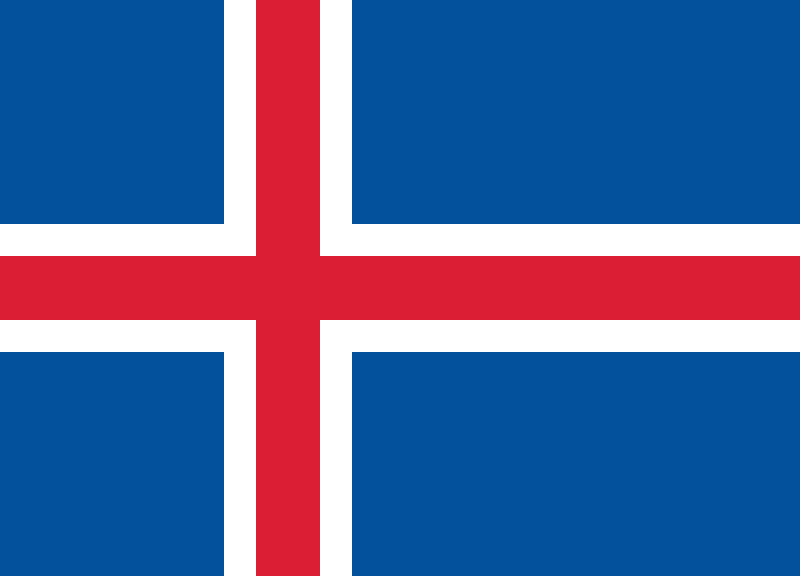Colors and Symbolism:
The blue hue adorning the Icelandic flag carries profound symbolism, representing the expansive North Atlantic Ocean enveloping the island nation. This shade embodies Iceland's deep-rooted maritime heritage, its intimate bond with the sea, and its reliance on flourishing fishing and maritime enterprises. Beyond its maritime significance, the blue expanse encapsulates the essence of freedom, harking back to historical narratives where the ocean bestowed a sense of openness and promise upon the Icelandic populace.
Conversely, the pristine white element of the flag is a testament to Iceland's snow-clad terrains and ice-covered vistas, an homage to its glaciers, frozen landscapes, and enduring winter conditions. This snowy hue resonates with the nation's distinct geographic location, evoking its rugged yet breathtaking natural environment. Amidst the symbolism, white also embodies purity, unity, and the unspoiled allure of the land, speaking to Iceland's pristine and untouched character.
Design and Layout:
A distinctive and harmonious design, the Icelandic flag bears a unique aspect ratio of 18:25, yielding a captivating equilibrium that distinguishes it from other flags. Within this framework, the flag is horizontally divided into three stripes, each of equal width. Anchoring the composition are the upper and lower bands, both elegantly adorned in the same deep blue as the North Atlantic. These azure stripes enfold a central stripe of pure white, resulting in a symmetrical arrangement that emphasizes the encapsulation of Iceland's maritime and frozen worlds within the embrace of unity.
Historical Context:
On a historical front, the Icelandic flag's inception unfolds on June 17, 1944, a pivotal juncture marking Iceland's formal emergence as an independent republic, severing ties with Denmark. Prior to this milestone, Iceland's flag was intrinsically intertwined with Danish rule, often accompanied by additional symbols that embodied its historical connection to Denmark.
Cultural and National Significance:
The vibrant interplay of colors and design holds a mirror to Iceland's multifaceted natural milieu, a tapestry interwoven with volcanic terrains, glacial landscapes, geothermal springs, and dramatic coastlines. This visual representation encapsulates the essence of Iceland's geological singularity, juxtaposing the azure embrace of the North Atlantic against the pristine expanses of ice and snow, creating an arresting panorama that is both unique and mesmerizing.
In addition to its ecological resonance, the flag operates as a visual conduit for Icelandic national identity, stirring a profound sense of pride and cohesion among its inhabitants. A living testament to the country's enduring culture, language, and age-old traditions, it mirrors the collective journey of a nation that has evolved and thrived over the course of centuries.
Usage and Etiquette:
This emblem of Icelandic spirit finds its place of prominence fluttering proudly across a diverse array of settings, encompassing government edifices, public squares, private residences, and diplomatic precincts. When flying alongside other flags, the Icelandic banner often graces an equally elevated position, an indication of its significance in the hierarchy of symbols.
Moreover, the flag assumes center stage during national festivities, celebratory occasions, and pivotal events. It partakes in the ritual of being raised and lowered in ceremonial acts, and it receives salutations and reverence as a mark of esteem.
To encapsulate, the Icelandic flag is more than a mere representation; it is an evocative emblem encapsulating the geographical, historical, and cultural essence of the nation. Its meticulously crafted design and layered symbolism narrate the tale of Iceland's expedition to sovereignty, its unparalleled natural grandeur, and the indomitable spirit permeating its populace.
Last Updated on: August 09, 2023